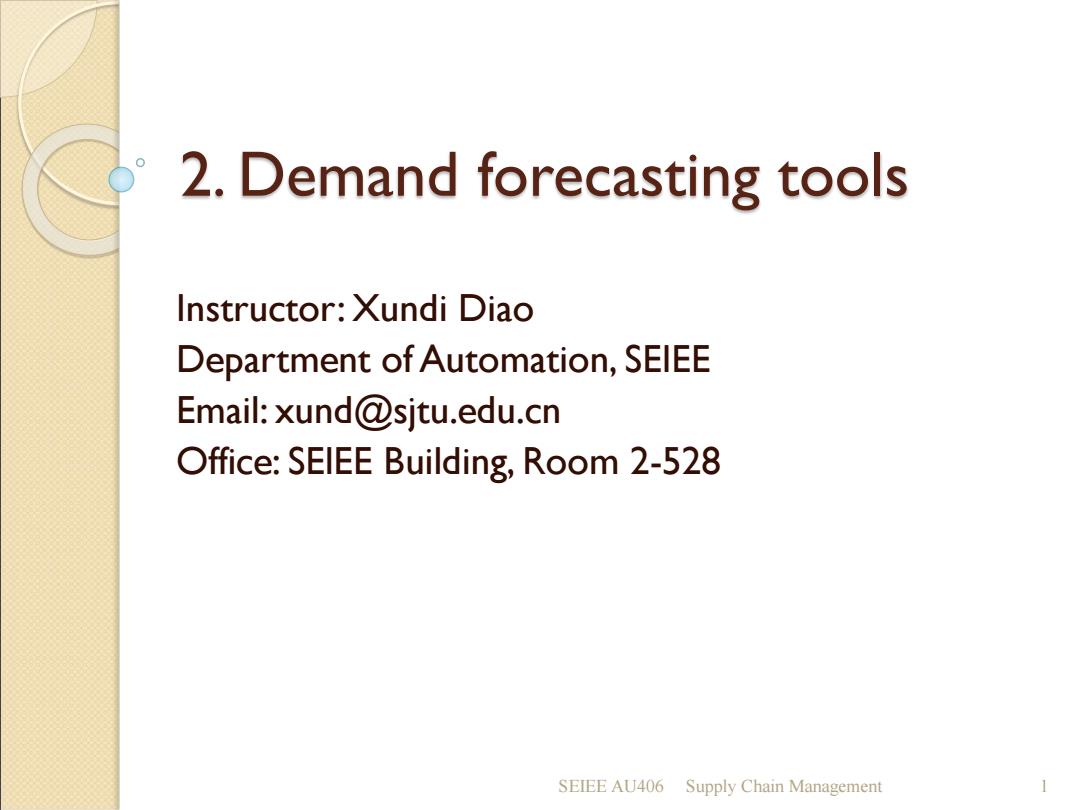
2.Demand forecasting tools Instructor:Xundi Diao Department of Automation,SEIEE Email:xund@sjtu.edu.cn Office:SEIEE Building,Room 2-528 SEIEE AU406 Supply Chain Management
2. Demand forecasting tools SEIEE AU406 Supply Chain Management 1 Instructor: Xundi Diao Department of Automation, SEIEE Email: xund@sjtu.edu.cn Office: SElEE Building, Room 2-528
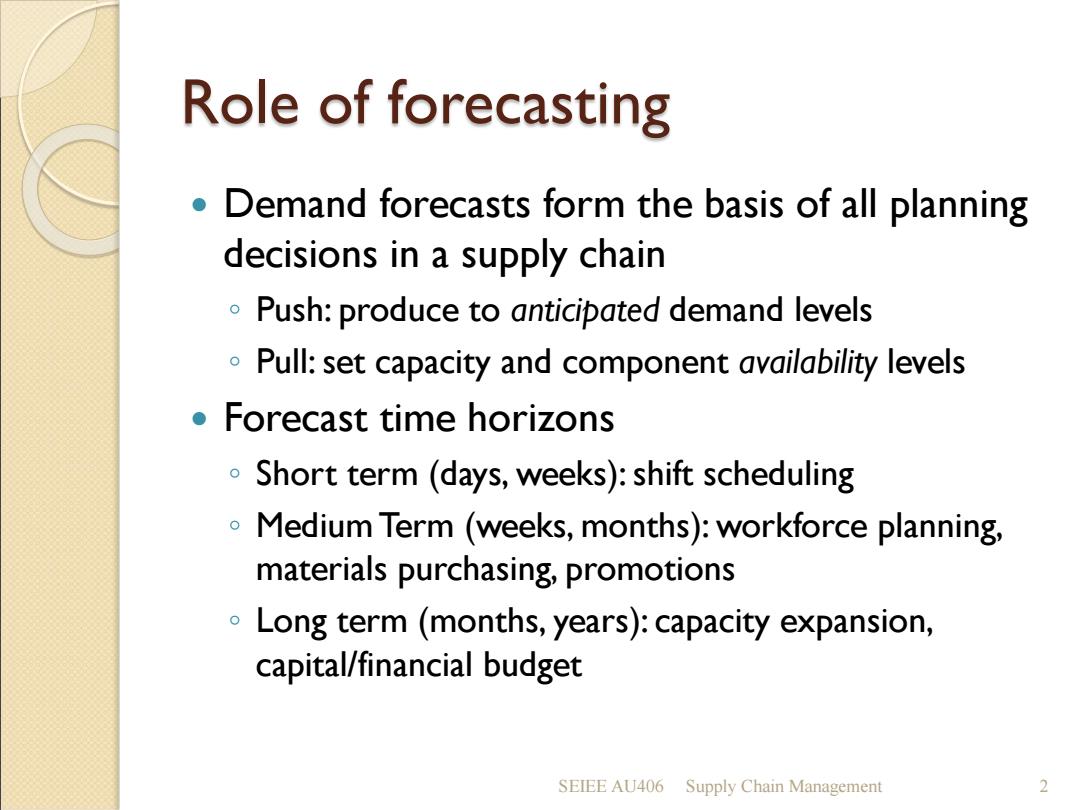
Role of forecasting Demand forecasts form the basis of all planning decisions in a supply chain Push:produce to anticipated demand levels Pull:set capacity and component availability levels Forecast time horizons Short term(days,weeks):shift scheduling Medium Term(weeks,months):workforce planning, materials purchasing,promotions Long term (months,years):capacity expansion, capital/financial budget SEIEE AU406 Supply Chain Management 2
Role of forecasting Demand forecasts form the basis of all planning decisions in a supply chain ◦ Push: produce to anticipated demand levels ◦ Pull: set capacity and component availability levels Forecast time horizons ◦ Short term (days, weeks): shift scheduling ◦ Medium Term (weeks, months): workforce planning, materials purchasing, promotions ◦ Long term (months, years): capacity expansion, capital/financial budget SEIEE AU406 Supply Chain Management 2
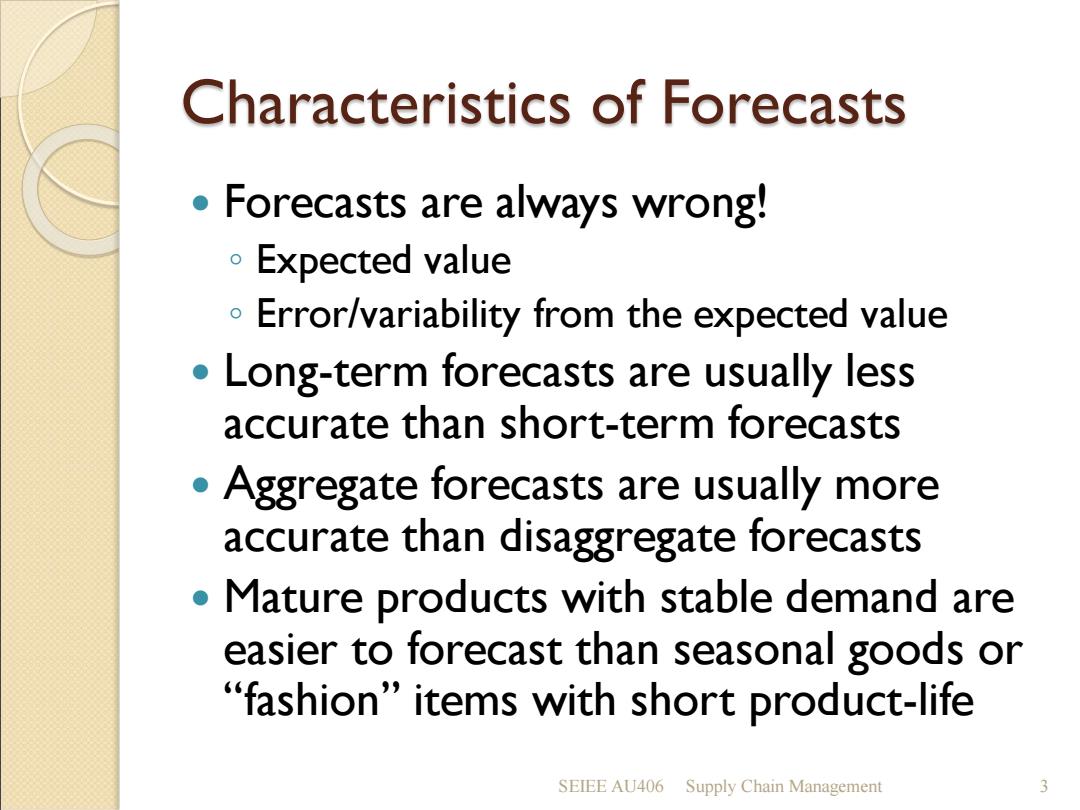
Characteristics of Forecasts Forecasts are always wrong! o Expected value Error/variability from the expected value Long-term forecasts are usually less accurate than short-term forecasts Aggregate forecasts are usually more accurate than disaggregate forecasts Mature products with stable demand are easier to forecast than seasonal goods or "fashion"items with short product-life SEIEE AU406 Supply Chain Management 3
Characteristics of Forecasts Forecasts are always wrong! ◦ Expected value ◦ Error/variability from the expected value Long-term forecasts are usually less accurate than short-term forecasts Aggregate forecasts are usually more accurate than disaggregate forecasts Mature products with stable demand are easier to forecast than seasonal goods or “fashion” items with short product-life SEIEE AU406 Supply Chain Management 3
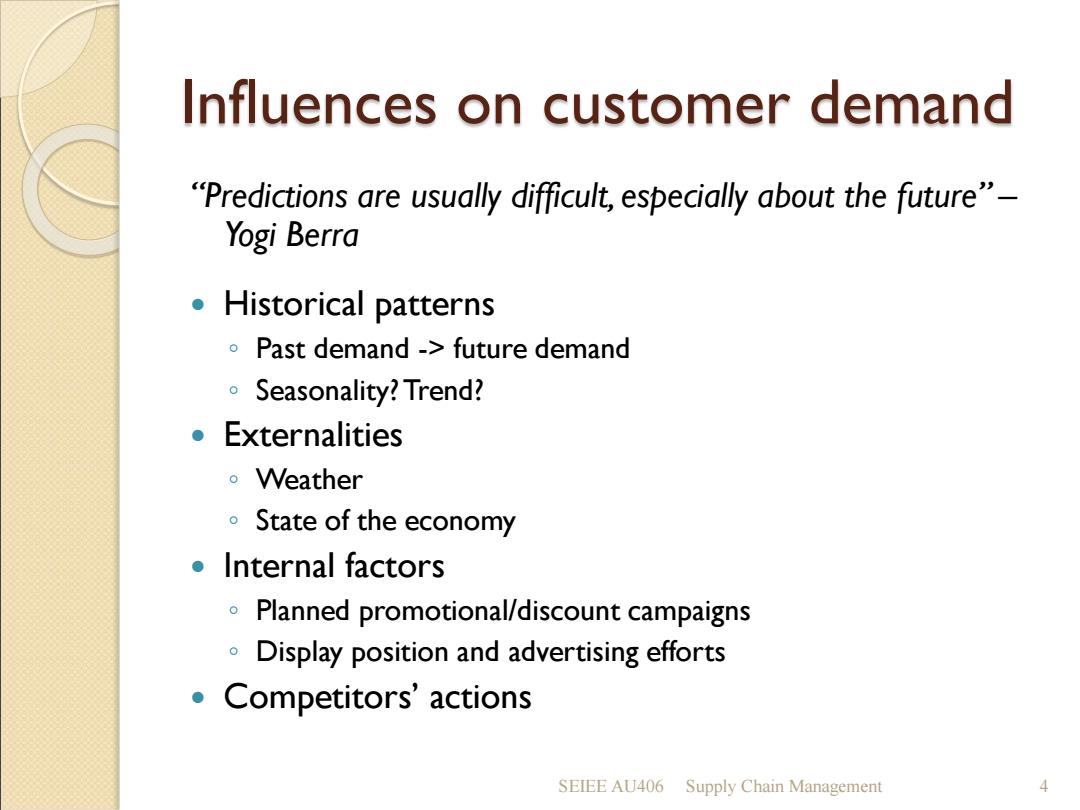
Influences on customer demand "Predictions are usually difficult,especially about the future"- Yogi Berra 。Historical patterns Past demand -future demand Seasonality?Trend? ●Externalities Weather State of the economy ●Internal factors o Planned promotional/discount campaigns Display position and advertising efforts Competitors'actions SEIEE AU406 Supply Chain Management 4
Influences on customer demand “Predictions are usually difficult, especially about the future” – Yogi Berra Historical patterns ◦ Past demand -> future demand ◦ Seasonality? Trend? Externalities ◦ Weather ◦ State of the economy Internal factors ◦ Planned promotional/discount campaigns ◦ Display position and advertising efforts Competitors’ actions SEIEE AU406 Supply Chain Management 4
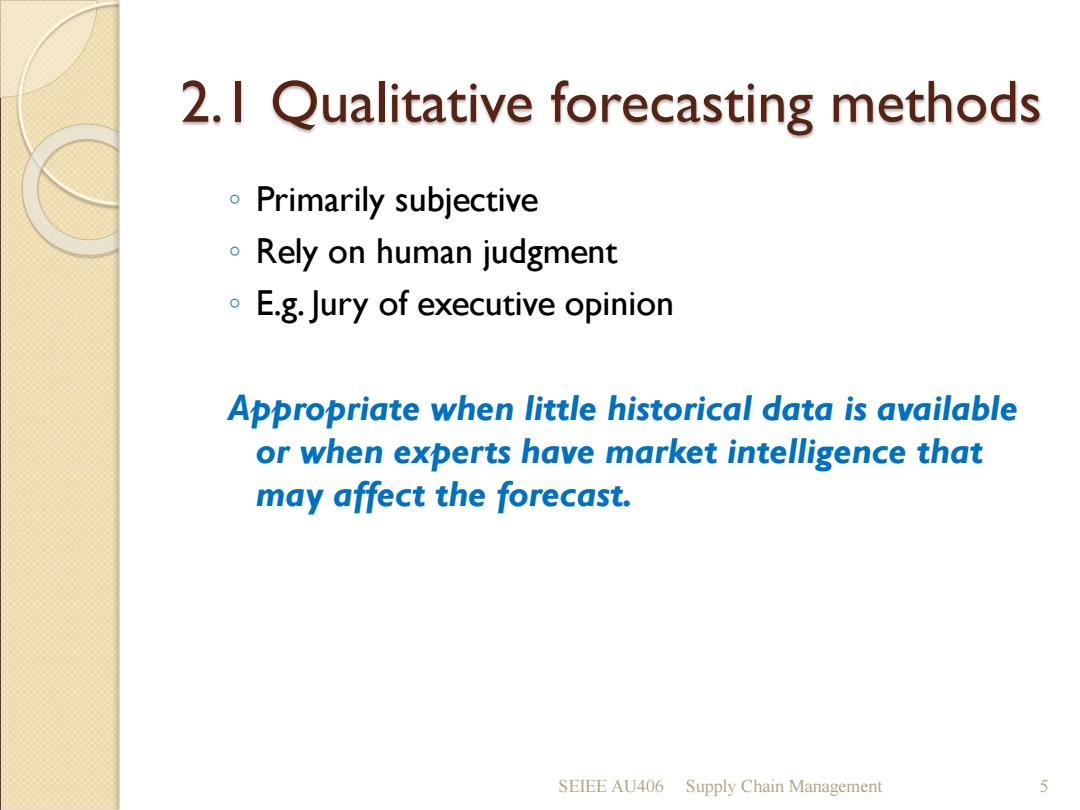
2.I Qualitative forecasting methods o Primarily subjective Rely on human judgment E.g.Jury of executive opinion Appropriate when little historical data is available or when experts have market intelligence that may affect the forecast. SEIEE AU406 Supply Chain Management
2.1 Qualitative forecasting methods ◦ Primarily subjective ◦ Rely on human judgment ◦ E.g. Jury of executive opinion Appropriate when little historical data is available or when experts have market intelligence that may affect the forecast. SEIEE AU406 Supply Chain Management 5
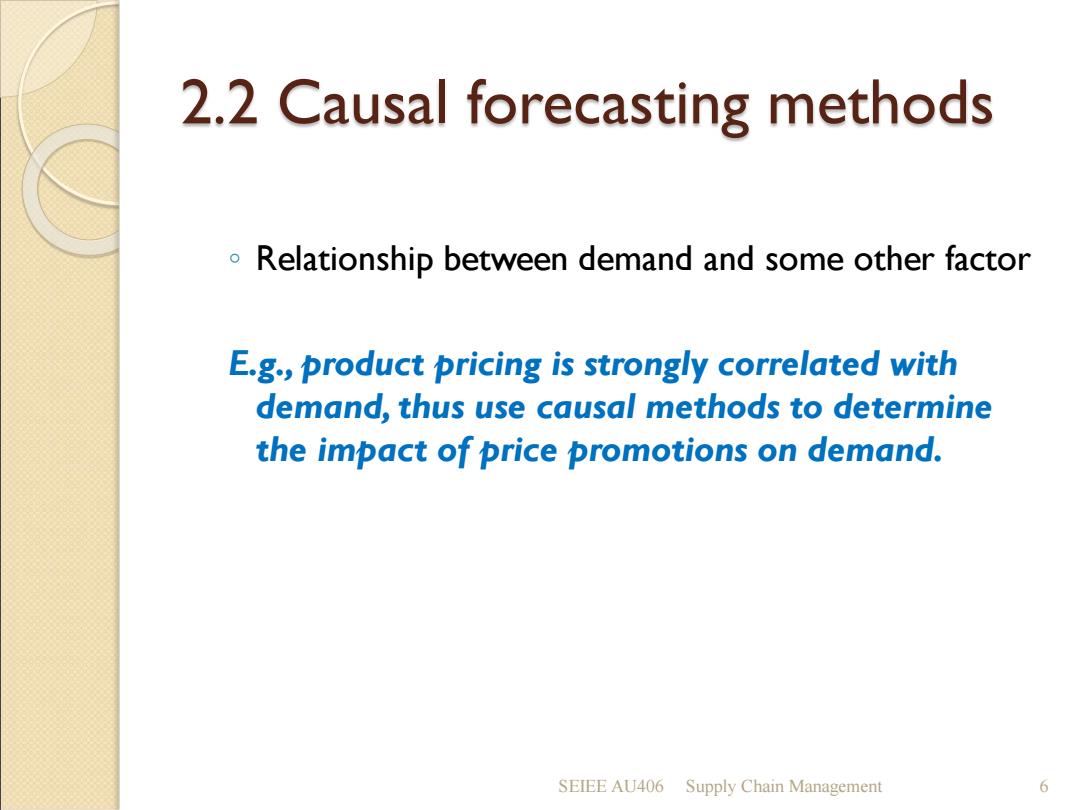
2.2 Causal forecasting methods Relationship between demand and some other factor E.g.,product pricing is strongly correlated with demand,thus use causal methods to determine the impact of price promotions on demand. SEIEE AU406 Supply Chain Management 6
2.2 Causal forecasting methods ◦ Relationship between demand and some other factor E.g., product pricing is strongly correlated with demand, thus use causal methods to determine the impact of price promotions on demand. SEIEE AU406 Supply Chain Management 6
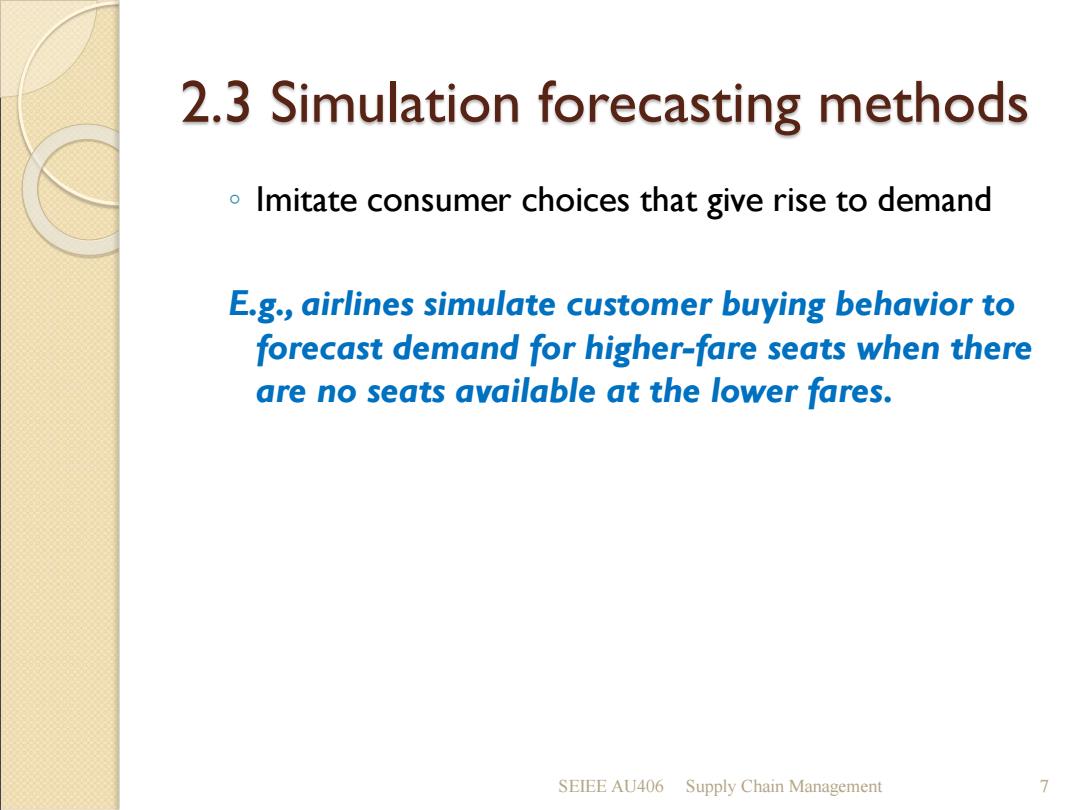
2.3 Simulation forecasting methods Imitate consumer choices that give rise to demand E.g.,airlines simulate customer buying behavior to forecast demand for higher-fare seats when there are no seats available at the lower fares. SEIEE AU406 Supply Chain Management 7
2.3 Simulation forecasting methods ◦ Imitate consumer choices that give rise to demand E.g., airlines simulate customer buying behavior to forecast demand for higher-fare seats when there are no seats available at the lower fares. SEIEE AU406 Supply Chain Management 7

2.4 Time series forecasting methods Use historical demand only Best with stable demand Include >Moving Average >Simple exponential smoothing >Holt's method:exponential smoothing with trend >Winter's Method:exponential smoothing with seasonality Appropriate when the basic demand pattern does not vary significantly from one year to the next. SEIEE AU406 Supply Chain Management 8
2.4 Time series forecasting methods ◦ Use historical demand only ◦ Best with stable demand ◦ Include Moving Average Simple exponential smoothing Holt’s method: exponential smoothing with trend Winter’s Method: exponential smoothing with seasonality Appropriate when the basic demand pattern does not vary significantly from one year to the next. SEIEE AU406 Supply Chain Management 8
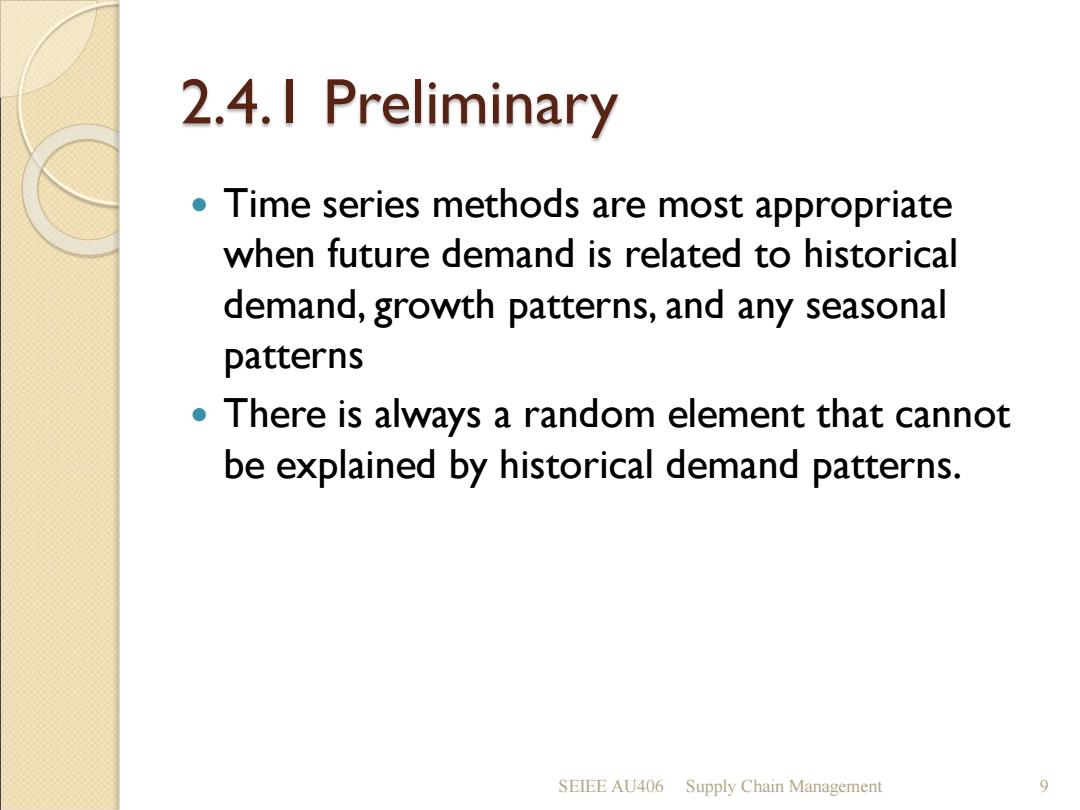
2.4.I Preliminary Time series methods are most appropriate when future demand is related to historical demand,growth patterns,and any seasonal patterns There is always a random element that cannot be explained by historical demand patterns. SEIEE AU406 Supply Chain Management 9
2.4.1 Preliminary Time series methods are most appropriate when future demand is related to historical demand, growth patterns, and any seasonal patterns There is always a random element that cannot be explained by historical demand patterns. SEIEE AU406 Supply Chain Management 9
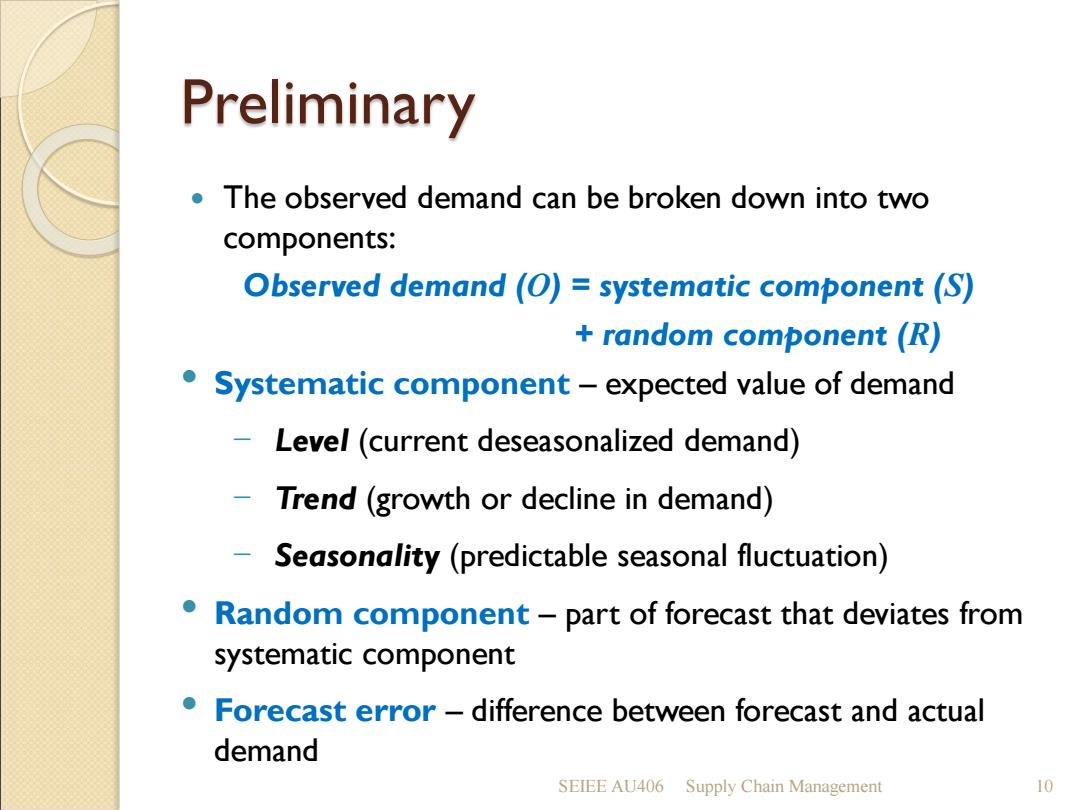
Preliminary The observed demand can be broken down into two components: Observed demand(O)=systematic component(S) random component(R) Systematic component-expected value of demand -Level(current deseasonalized demand) Trend(growth or decline in demand) Seasonality (predictable seasonal fluctuation) .Random component-part of forecast that deviates from systematic component Forecast error-difference between forecast and actual demand SEIEE AU406 Supply Chain Management 10
Preliminary The observed demand can be broken down into two components: Observed demand (O) = systematic component (S) + random component (R) • Systematic component – expected value of demand − Level (current deseasonalized demand) − Trend (growth or decline in demand) − Seasonality (predictable seasonal fluctuation) • Random component – part of forecast that deviates from systematic component • Forecast error – difference between forecast and actual demand SEIEE AU406 Supply Chain Management 10